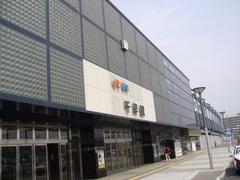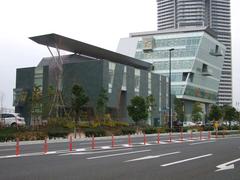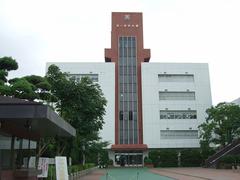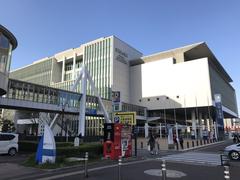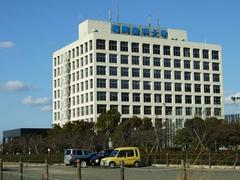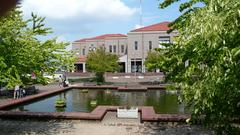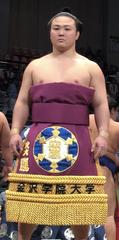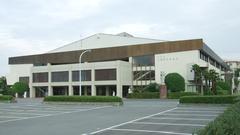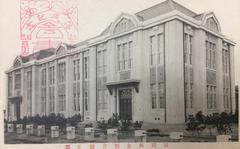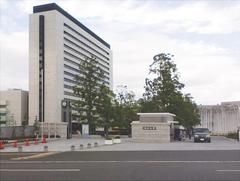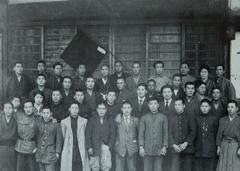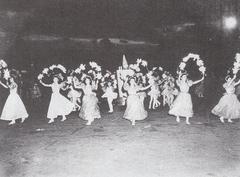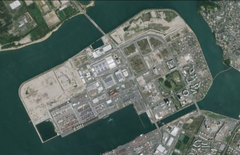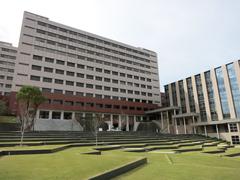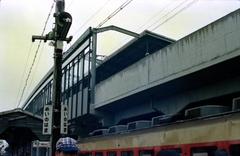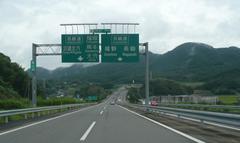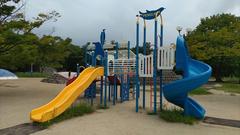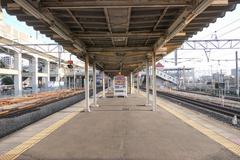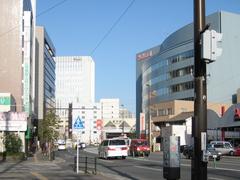
Sōfuku-Ji Visiting Hours, Tickets, and Travel Guide: Fukuoka’s Historic Zen Temple
Date: 04/07/2025
Introduction: The Legacy of Sōfuku-Ji in Fukuoka
Nestled in the historic Hakata district of Fukuoka, Sōfuku-Ji Temple is a cornerstone of Japan’s Zen Buddhist heritage and one of Fukuoka’s most significant historical sites. Established in 1195 by the pioneering monk Eisai and supported by samurai lord Minamoto no Yoritomo, Sōfuku-Ji is recognized as Japan’s first Zen temple and the birthplace of the Rinzai school of Zen Buddhism in Japan. Its centuries-old legacy is intertwined with the rise of the samurai class, the introduction of the tea ceremony, and enduring cultural exchanges with China.
Sōfuku-Ji’s tranquil grounds offer visitors a harmonious blend of traditional Zen architecture, meticulously crafted gardens, and invaluable historical relics. Serving as the family temple for the powerful Kuroda clan and a hub for Zen practice, the temple remains a vibrant spiritual and cultural destination. With free daily admission, easy access from central Fukuoka, and seasonal highlights throughout the year, Sōfuku-Ji welcomes travelers, spiritual seekers, and history enthusiasts alike. For updated visitor information and resources, consult the Sōfuku-Ji Official Website, Japan Travel, and Matcha Japan.
Table of Contents
- Sōfuku-Ji: A Brief Historical Overview
- Foundations of Zen Buddhism in Japan
- Architectural Features and Symbolism
- The Kuroda Clan and Notable Burials
- Visitor Information
- Unique Experiences and Seasonal Highlights
- Nearby Attractions
- Frequently Asked Questions (FAQ)
- Useful Links and References
Sōfuku-Ji: A Brief Historical Overview
Founded in the late 12th century, Sōfuku-Ji quickly became a focal point for the introduction and dissemination of Zen Buddhism in Japan. Eisai’s studies in China and subsequent return with Zen teachings and tea seeds marked the beginning of a new era, not only in religious practice but also in Japanese culture. The temple’s early development was shaped by influential monks such as Tan’e and Enni Ben’en, with support from powerful regional leaders like Mutō Sukeyori.
Throughout its history, Sōfuku-Ji endured destruction and rebuilding. After being razed in 1586 during regional conflicts, it was reconstructed in its current Hakata location by Kuroda Nagamasa in 1600, becoming the Kuroda clan’s family temple. Today, the site embodies both spiritual resilience and historical continuity, with its cemetery containing the graves of the clan and other notable figures.
Foundations of Zen Buddhism in Japan
Sōfuku-Ji’s establishment marked the formal introduction of the Rinzai school of Zen Buddhism to Japan (Japan Travel). Eisai, originally trained in the Tendai tradition, journeyed to China to study Chan Buddhism and returned with not only scriptures but also tea plant seeds. His efforts paved the way for the rise of Zen, which strongly influenced the emerging samurai class and Japanese aesthetics, including the development of the tea ceremony.
Zen’s focus on meditation and direct spiritual experience distinguished it from other Buddhist schools, and Sōfuku-Ji became a center for both religious practice and cultural exchange. The temple hosted Chinese monks and facilitated Japanese monks’ travels abroad, reinforcing its role as a bridge between cultures.
Architectural Features and Symbolism
Main Hall (Hondō)
The main hall stands as the spiritual heart of Sōfuku-Ji. Rebuilt multiple times due to fires and wartime damage, the current structure exemplifies Zen simplicity: wooden beams, tiled irimoya-zukuri (hip-and-gable) roofs, wide eaves, and an uncluttered tatami-matted interior. A revered statue of Shakyamuni Buddha or a Zen patriarch is the focal point, evoking tranquility and reverence.
Sanmon Gate
The imposing Sanmon gate marks the transition from the secular to the sacred. Its two-story wooden structure, robust pillars, and traditional roof invite visitors to pause and reflect before entering the temple precincts. Stone lanterns and a tree-lined approach enhance the meditative ambiance.
Sub-Temples, Bell Tower, and Sutra Repository
Surrounding buildings serve various functions:
- Kuri: Monks’ living quarters and kitchen, designed for practicality and simplicity.
- Kyōzō: Repository for sacred texts, built to protect them from the elements.
- Shōrō: Bell tower housing a large bronze bell, whose resonant chimes punctuate daily rituals.
Zen Garden (Karesansui)
Sōfuku-Ji’s Zen garden exemplifies the art of karesansui, using raked gravel, stones, and carefully pruned plants to evoke natural landscapes. Designed for contemplative viewing, the garden reflects Zen principles of impermanence and harmony, especially beautiful during cherry blossom and autumn foliage seasons.
The Kuroda Clan and Notable Burials
The temple cemetery is a significant historical site, containing the mausoleums of the Kuroda clan—Fukuoka’s ruling family during the Edo period. Other prominent burials include the tea master Shimai Sōshitsu, medical pioneer Takaba Osamu, and nationalist figures. These graves offer insight into the intersection of religion, politics, and culture in Japanese history.
Visitor Information
Hours and Admission
- Open Daily: 9:00 AM–5:00 PM (last admission 4:30 PM). Hours may vary during holidays or events.
- Admission: Free. Some special exhibitions or events may require a fee—check the official website for updates.
Accessibility and Directions
- Location: Hakata Ward, Fukuoka City.
- By Subway: Kuko Line to Gion Station (Exit 1); 10-minute walk.
- By Train: 15-minute walk from JR Hakata Station.
- By Bus/Taxi: Local buses and taxis readily available.
- Accessibility: Main paths are paved and mostly level. Some areas have steps; assistance is recommended for wheelchair users. Accessible restrooms are available.
Travel Tips and Etiquette
- Best Times: Visit in spring (cherry blossoms) or autumn (foliage) for peak beauty.
- Dress Code: Modest attire; remove shoes before entering the main hall.
- Photography: Permitted in outdoor areas; restricted inside buildings and during ceremonies.
- Behavior: Maintain silence and respect, especially near worship spaces. Do not use flash photography or tripods inside.
Unique Experiences and Seasonal Highlights
- Zen Meditation (Zazen): Occasionally open to visitors—check event schedules.
- Cultural Events: Tea ceremonies, calligraphy exhibitions, and seasonal festivals.
- Gardens: Seasonal highlights include cherry blossoms (March–April) and autumn leaves (November).
- Artifacts: View national cultural treasures and calligraphy exhibits, sometimes displayed at the Fukuoka City Museum.
Nearby Attractions
Combine your visit with other local highlights:
- Tocho-ji Temple: Known for its Great Buddha statue.
- Kushida Shrine: Fukuoka’s most revered Shinto shrine.
- Canal City Hakata: Shopping and entertainment complex.
- Hakata Machiya Folk Museum: Explore traditional crafts and local history.
Frequently Asked Questions (FAQ)
Q: What are Sōfuku-Ji’s visiting hours?
A: 9:00 AM–5:00 PM daily; last entry at 4:30 PM. Check the official site for updates.
Q: Is there an entrance fee?
A: Admission to the grounds is free; some exhibitions or activities may charge a small fee.
Q: How do I get to Sōfuku-Ji?
A: Walk from Gion Station (Kuko Subway Line) or JR Hakata Station, or take local buses/taxis.
Q: Is Sōfuku-Ji accessible for wheelchair users?
A: Most areas are accessible, but some have steps. Contact the temple if you need assistance.
Q: Can I take photographs?
A: Yes, in outdoor areas; not inside the main hall or during ceremonies.
Q: Are guided tours or meditation sessions available?
A: Occasionally—check the temple’s website or local tourism boards for schedules.
Useful Links and References
- Official Sōfuku-Ji Temple Website
- Japan Travel: Sōfuku-Ji Temple
- Living Nomads: Fukuoka Travel Guide
- Japan Guide: Sōfuku-Ji
- Matcha Japan: Sōfuku-Ji
- Fukuoka Calendar
- Tourist in Japan - Fukuoka Itinerary
- Lonely Planet: Sōfuku-Ji
- For further reading on Fukuoka weather and travel tips: Tsunagu Japan
Summary and Recommendations
Sōfuku-Ji Temple is a profound destination at the intersection of spiritual tradition, historical depth, and serene natural beauty. With its roots in the dawn of Japanese Zen Buddhism, its architectural elegance, and its tranquil gardens, it offers both contemplative retreat and cultural discovery. Free admission, convenient access, and enriching experiences make it a highlight for any Fukuoka itinerary. To enhance your visit, download the Audiala app for audio guides and curated content, and check current schedules for events and tours.




